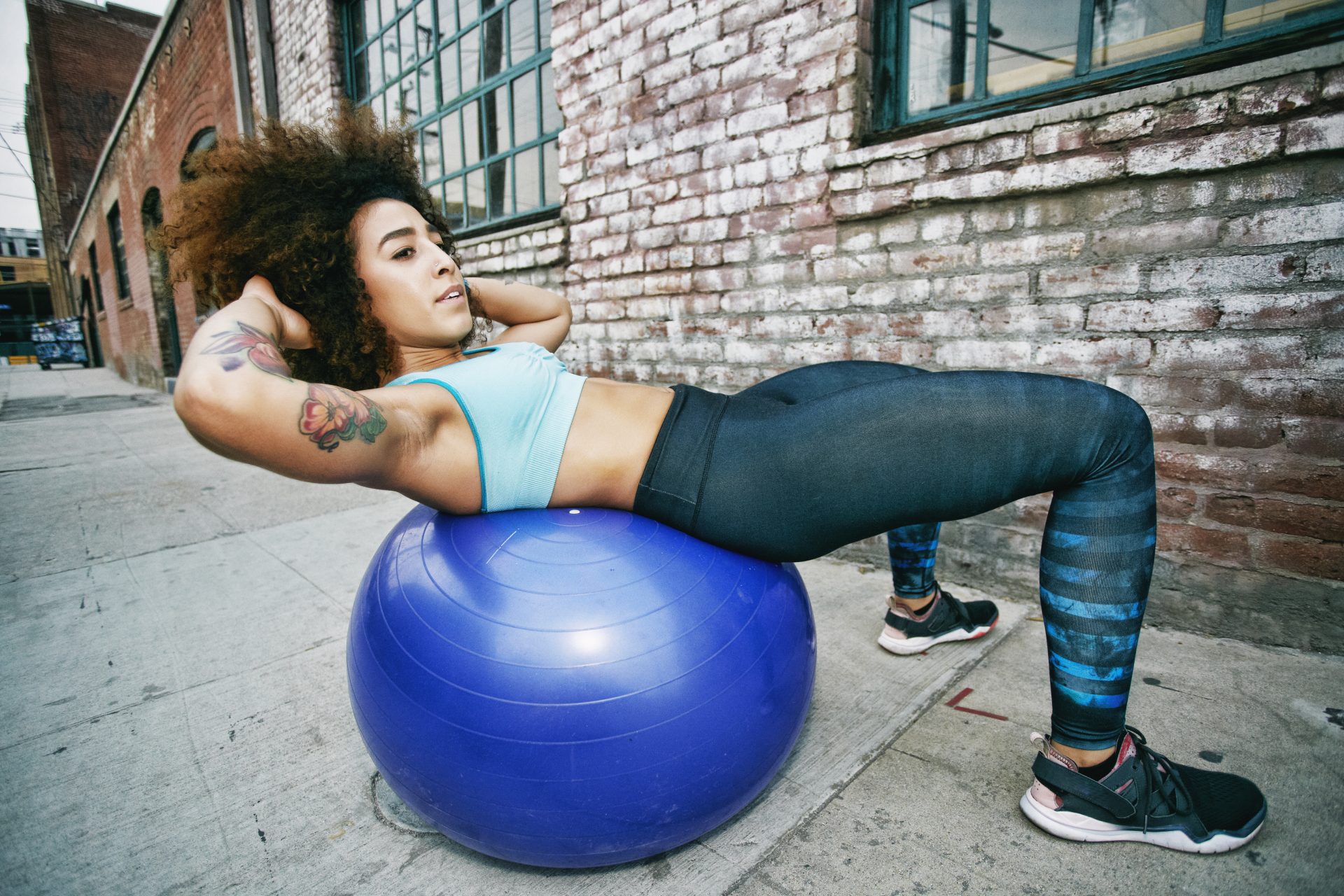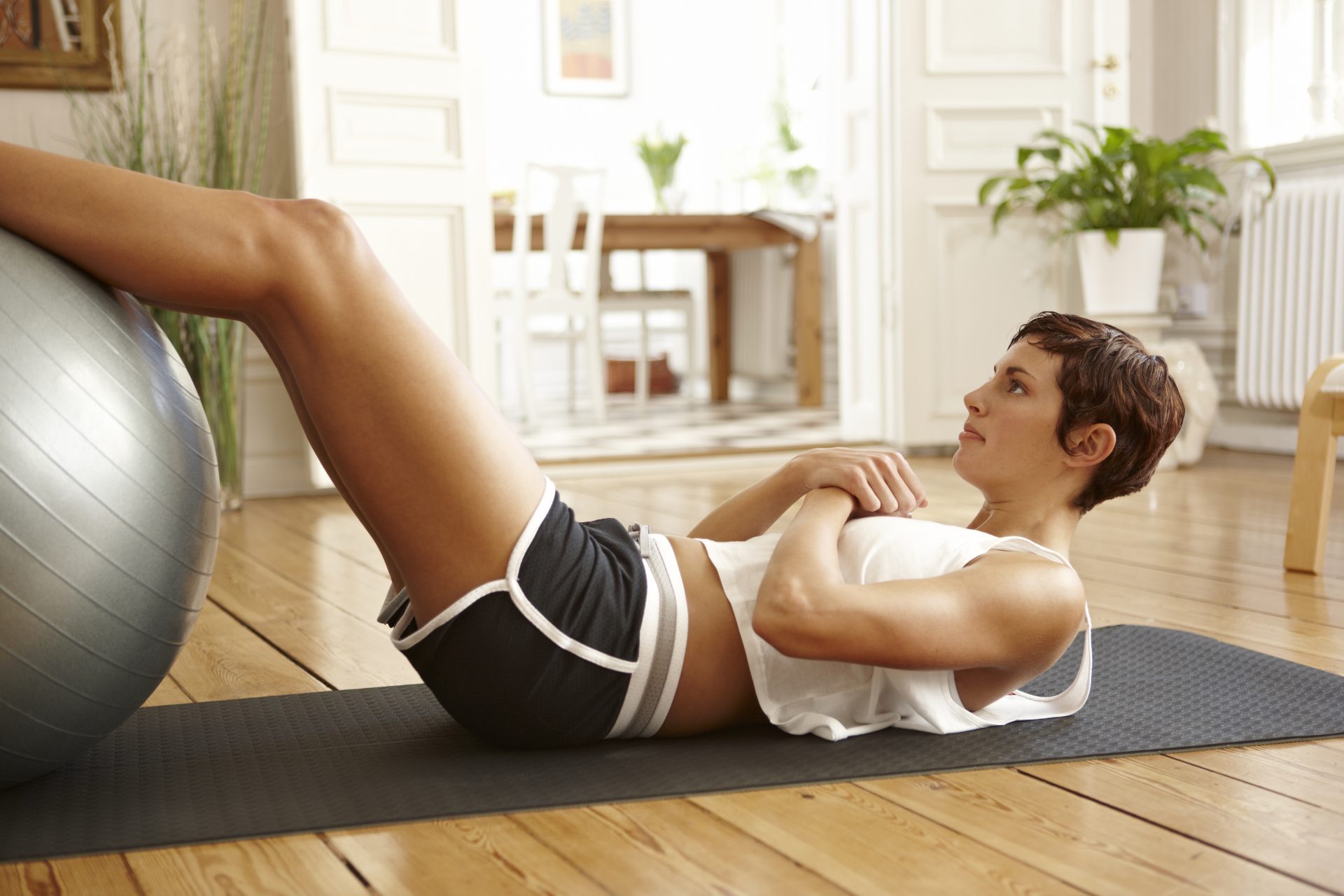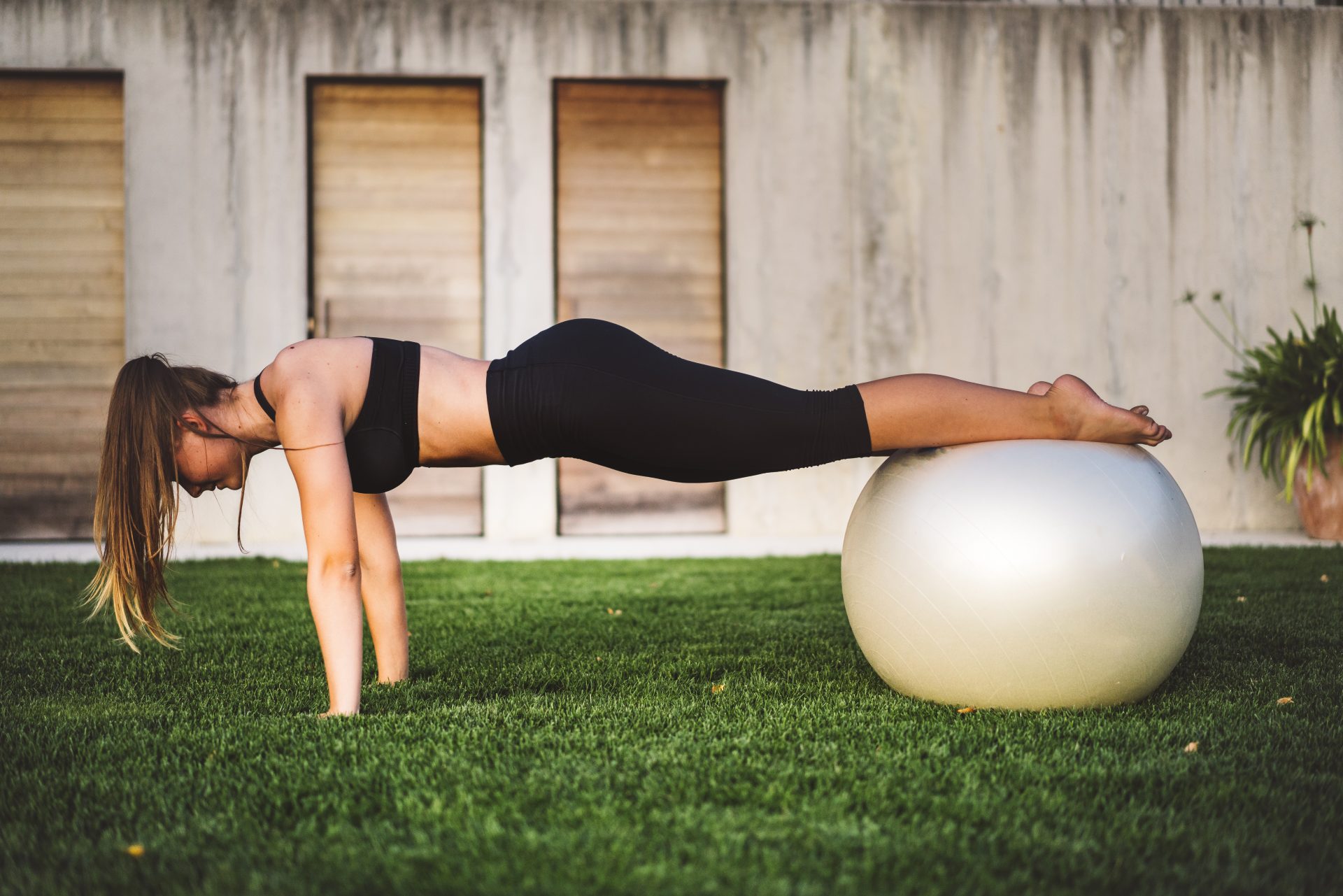The next time you’re in the gym, or after a new piece of kit for home workouts, here’s why you should consider the stability ball…
OK, let’s see a show of hands: whose go-to piece of kit in the gym is the stability ball? We’ll wait…
Chances are, if you’re reading this, stability balls (also known as an exercise balls, yoga balls or fitness balls) are something you’ve dabbled with but never given much time to.
Maybe you’ve used one for core exercises during a full-body workout; maybe you bought one to give your yoga and pilates home workouts a bouncy boost during lockdown; maybe all you’ve seen is women in labour gently bouncing on them during episodes of One Born Every Minute.
You may also like
6 best back, neck and shoulder stretches for when you’ve been sitting at a computer all day
Either way, our guess would be that the humble stability ball won’t be the first thing you reach for if you’re going back to the gym next week… but should it be?
“Moves that include a stability ball are what we in the fitness industry would call ‘accessory exercises’,” says Alex Parren, PT, running coach and nutritionist for Meglio. “This means it doesn’t take the main focus of your workout, and is used as an additional aid to work smaller muscle groups at the end of a workout.”
We all love a bit of efficiency in the gym; get in, get the job down, get out. But just because a stability ball isn’t the main attraction, that doesn’t mean it should be overlooked.

“Many gym-goers will stick to the usual weights section or treadmill and rower,” says Alex, “but one of the best things about stability balls is that they work the body in a way it is not usually worked. It will strengthen your body from head to toe and improve weaknesses and imbalances.”
So how does a stability ball work?“Even if you just sit on the ball, you have to incorporate many muscles just to stay on,” says health coach Alison Stockton. “The primary benefit is that the body responds to the instability of the ball to remain balanced, leading to greater activation of core muscles, which can result in improved back and spine health, core stability, posture and muscle balance.”
If you’re still not convinced, and think stability balls are just for yogis and over-70s exercise groups, Alison regularly ran packed “fit ball” classes before lockdown, and has used the kit when working with professional motorsports athletes to help enhance their stability and core – particularly important for dealing with exceptional amounts of G force.
You may also like
TRX exercises: 6 TRX exercises to strengthen your body from every angle
There are so many ways to use an exercise ball. If you’re a beginner, just sitting on it and gaining balance is key. As you build your core strength a little more each time you use it, you’ll gain more confidence and stability along the way.
“Once you have established confidence and balance,” says Alison, “try lifting one foot off the ground slowly and alternate. When you’re feeling even more confident, it can also be used to kneel on to work with weights. Just remember that your weight will be less than when you’re standing because you won’t be using momentum to lift, and you are stabilising your core.”

“You can use stability balls for a range of challenging and beneficial exercises,” Alex adds, “such as lying hamstring curls, wall sits, or elevated press ups. The more you challenge your balance, the more exciting the exercise will be as you will really have to concentrate on the movement to get it right.”
3 stability ball exercises to try
Lying Hamstring Curls
- Lie flat on the floor – preferably on a yoga mat to be more comfortable – with your legs resting on the stability ball. The ball should be placed so that your feet are in the centre.
- Lift your bottom off the floor by squeezing your glutes and pushing your arms into the floor for balance.
- Slowly draw both legs in towards your body, digging your heels into the ball as it rolls towards you. Really feel your hamstrings doing the work.
- Slowly extend your legs back out, keeping your back and bottom raised off the floor.
- Repeat for 10 reps.
You may also like
Gyms reopening in April 2021: the latest rules and advice from the government on the UK lockdown lifting
Elevated Press Ups
- Get onto your hands and knees with the stability ball behind you. Lift your feet from the knee and rest them on the stability ball.
- Carefully put your weight onto the ball, lift your knees off the floor, and roll it back with your feet so that you are in a press up position with your feet resting entirely on the ball.
- Squeeze and engage your core.
- Slowly and carefully lower down into a press up, feeling your chest and shoulders working as well as your core.
- Slowly push back up to your starting position.
- Repeat for 10 reps.

Wall Sits
- Place the stability ball against a wall at about waist height then turn your back and lean against it.
- Move your feet forward slightly and raise your arms out straight in front of you.
- Slowly lower down into a squat, with the stability ball rolling smoothly down the wall
- Pause for a second at the bottom of the squat, then roll back up to standing.
- Repeat for 10 reps.
Follow @StrongWomenUK on Instagram for the latest workouts, delicious recipes and motivation from your favourite fitness experts.
Images: Getty
Source: Read Full Article
